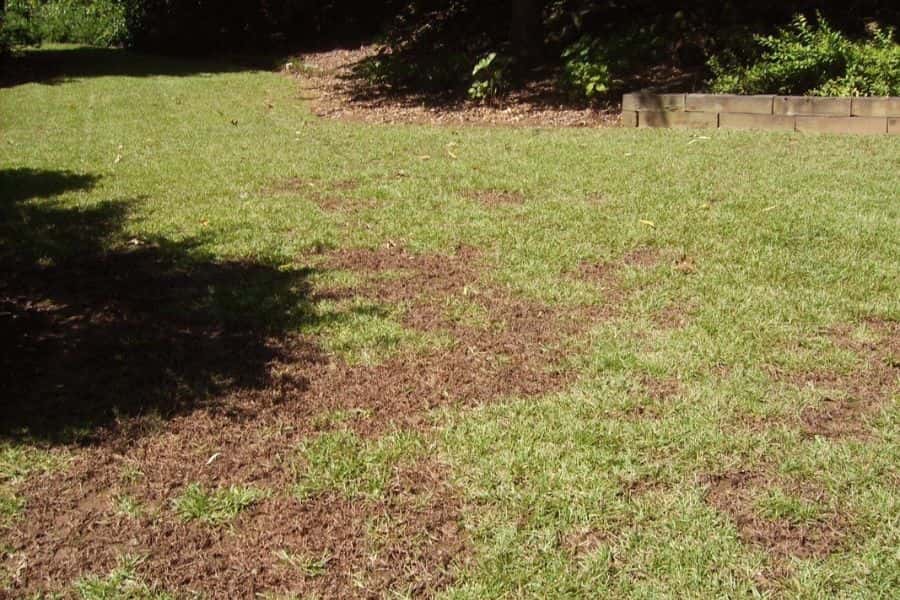Crabgrass is introduced as one of the most unpleasant and difficult weeds to remove that thrives in and competes with lawn grass. So the question is, how to get rid of dead crabgrass? One of the worst things about crabgrass is that it can grow in harsh weather and poor soil.
The dead part of crabgrass looks unpleasant, and its dead leaves may sometimes give your lawn an awful look. Also, they can generate thousands of seeds for further growth. This article will discuss the best ways of eradicating crabgrass for beautifully manicured lawns where you don’t want crabgrass infested.
What to do with crabgrass?
Though the advantage of crabgrass is that it can be fed to the cattle and help to make compost as a component, it can be destructive to your lawn. Because it has an annual life cycle, it must be controlled before each season by using pre-emergent and post-emergent herbicides and other natural methods. So, installing some counterattack against crabgrass is necessary to break down the lifecycle of regrowth.
How destructive is dead crabgrass?
As an opportunistic weed, crabgrass can sprout in bare places on your lawn soil. They can also grow from dead crabgrass seeds when you need to spread grass seeds and new seedlings are ready to germinate.
They can germinate when the temperature reaches 55 °F. They can also grow well in the place of thin grass on your lawn by the seeds. They are more ugly in looking rather than destructive, and they can affect the fitness of your yard.
The crabgrass plants die in winter and thus produce crabgrass seeds that survive the whole cool season and germinate for the next season. Crabgrass is a bane of our lives as it needs too much time to control or kill it. Therefore, growing new crabgrass should be controlled immediately by spraying herbicides or natural methods before each growing season.
Under what circumstances can crabgrass grow?
As we mentioned, crabgrass can grow well in any bare place where the grass is grown on your lawn. It can also thrive in harsh environmental conditions such as high temperatures and compacted or poor-quality soil, where other weed seeds cannot.
It can grow well in a place where a high proportion of soil exists. It is hard to find a bare patch of lawn where there is no crabgrass. Crabgrass thrives in these circumstances because the empty area quickly warms up from the sunlight penetrating through the ground.
Another factor that helps your grasses survive and grow effectively in crabgrass is their high water and phosphorus content. Knowing all of the conditions under which crabgrass grows will make it much easier to conduct counterattacks to eradicate it.

How to get rid of dead crabgrass?
Control of crabgrass is crucial for the better growth of your lawn grass. One dead crabgrass can cover your lawn because it can sprout thousands of seeds. So, you must follow some strategies to reduce the spread of dead crabgrass seeds and prevent the growth and germination of seeds.
Maintain a healthy lawn:
Proper maintenance is one of the best and most effective ways to control or remove dead crabgrass. When your lawn soil is healthier, it grows more young grass and becomes thin with lush and green grass.
It is essential to check the pH of your soil, proper drainage facility, maintain good moisture content, and allow fundamental nutrients to keep your lawn healthy. Crabgrass grows well in harsh weather and poor-quality soils, so maintaining a healthy property prohibits crabgrass development.
Mow at an appropriate height:
Additionally, it’s crucial to mow your lawn at a suitable height of at least 3 inches to allow it to shed. This height is higher than usual and keeps the climate in your yard cold, which inhibits the growth of weed seeds. Cutting down mature grasses, however, spreads the seeds of other plants. You must ensure that your lawn is properly mowed before removing the dead crabgrass and that it is not cut too short.
Deep water your lawn as needed:
Irrigation is essential to make your lawn grass and its root system stronger, preventing the growth of crabgrass seeds. Irrigate regularly when the weather is sweltering, such as in summer, to allow your lawn grass a proper water supply, making the grass more thriving. Always try to follow deep watering rather than shallow watering for the best improvement of lawn grass.
Follow the aeration of the lawn soil in the spring:
The grass has a hard time getting adequate air and water when the soil in your lawn is significantly compacted. Crabgrass grows well in this hard soil, but lawn grass can’t grow well there because the soil is packed down. If your yard has a lot of clay, it would be best to aerate it by running an aerator over it to make sure it gets enough air, water, and nutrients.
Examine the dead crabgrass and its growing area:
To make sure that the whole stretch of crabgrass is not dead, you must look at both the dead crabgrass and the area where it is blooming. Crabgrass must be removed even if it doesn’t appear to be dying if you want to stop the disease from spreading.
Use a shovel or your hands to remove the crabgrass:
When crabgrass has just started to grow in your lawn, it is important to remove any dead plants by hand. The entire crabgrass plant can be removed by pulling on its primary roots with your hands, or if some of the roots are trapped in the ground, you can use a shovel to make it simple to remove.
Fertilize the lawn:
Your lawn’s grass will remain healthy and aid in preventing crabgrass growth if you feed it and provide it with the proper nutrients. To achieve this, fertilize your grass once in early September and once more in the middle of November. You need to apply at least 2 lbs. of nitrogenous fertilizer to each 1000-square-foot area.
Prevent the spread of seeds:
It is essential to prevent the seeds from spreading when you observe that your lawn is covered in crabgrass and that the dead crabgrass is ready to generate seeds.
When raked or mowed without monitoring, a single crabgrass can release hundreds of seeds that can spread throughout your lawn. If that happens, you might have to deal with a more serious problem for a very long time.
If you want to stop crabgrass seeds from spreading further, you must be careful when bagging your lawn clippings for composting materials. As high heat can kill the crabgrass seeds, pile them up in a spot where they can be heated by the sun for one to one and a half months.
Vinegar spray:
One of the best ways to eliminate crabgrass in 24 hours is by using gardening vinegar. In general, it has a higher concentration than regular vinegar. It will be simple to remove the crabgrass the next day if you fill the spray bottle with vinegar and spray it. The vinegar is available online or at a nearby lawn care store. This is one of the safest methods of control.
Pour boiling water:
It is also one of the most useful and environmentally friendly strategies to prevent crabgrass. Bring some water to a boil in a pot, then move it carefully to the crabgrass plants that need to be removed. Pour the water on top of the crabgrass plants. This method gets rid of crabgrass plants and stops them from growing back by hurting their root systems.
Use of herbicides:
Herbicides can be used to control crabgrass before spring to stop it from growing and to reduce the number of seeds it produces. Pre-emergent and post-emergent herbicides are the two main categories of herbicides. Herbicides are the only way to get rid of crabgrass when all other non-chemical methods have failed and the weed is taking over most of your lawn.
Pre-emergent herbicides:
Pre-emergent herbicides hit the soil right away and leave a chemical coating on top. Crabgrass seeds are unable to sprout because they absorb these chemicals from the soil’s surface as they develop.
Pre-emergent herbicide labels should be carefully examined before choosing one that will work best for your lawn grass. Then, utilize it in accordance with the advised dosages; you have a number of high-quality options available.
Pre-emergent herbicides are available as both liquid and powder. Read the label, pay great attention to the guidelines, and follow them to prevent crabgrass.
When to apply pre-emergent herbicides:
When the temperature hits 55 °F (13 °C) in the early spring, pre-emergent herbicides should be used. When using these herbicides, apply them at a depth of 4 inches (10 cm). You can buy a soil thermometer to make the process quick and easy. This method works well when crabgrass has not yet begun to develop.
How to apply pre-emergent herbicides:
Pre-emergent herbicide applications must always be made with a beginning fertilizer. Herbicides will prevent the sprouting of crabgrass seeds if they are still present. Fertilizer helps lawn grass grow thicker, which helps stop crabgrass seeds from germinating.
Post-emergent herbicides:
If you discover that your lawn has crabgrass plants growing throughout the summer and you need to get rid of them, using post-emergent herbicides will be your best action.
Herbicides that are put down after the grass has grown are more likely to kill the grass seeds and the whole crabgrass plant, including its roots. When the time comes to destroy the lawn entirely, it will be your best alternative.
You can use post-emergent herbicides to treat your lawn, or if it’s feasible, you can spot-treat crabgrass before applying the herbicide to each plant individually. If you wish to eliminate the crabgrass while protecting your lawn, you must spray this herbicide on each crabgrass plant.
My Last Words!
Crabgrass hurts the growth and development of other grasses that grow on lawns. Due to their allopathic effect, they can impede or even stop the growth of certain lawn grass varieties. During the winter, you must get rid of the crabgrass plants by hand or use another method. So, if you have dead crabgrass growing on your lawn, you need to get rid of it right away. If you don’t, it will quickly take over your whole yard, hurt you, and destroy your dreams.



